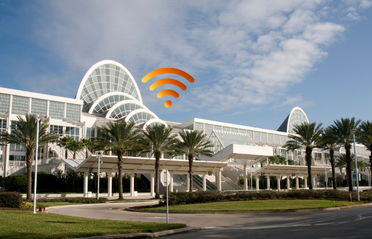Communication technology has been evolving at a fast pace for past two decades. During this time, wireless technology has also gone through many changes. From 3G and 4G, now we have companies expecting and preparing for 5G wireless technology. It’s the fifth-generation technology that might not have arrived yet, but OEMs have already started to make 5G enabled equipment.
Understanding 5G Wireless Technology
In simple words, it is the improved wireless internet technology that will allow faster speeds and reduced latency. According to the recent estimates, data speeds using 5G technology can be up to 20Gbps with less than one millisecond latency. However, those figures are only theoretical now. Keep in mind that LTE-A technology can also achieve speeds of 300Mbps on paper, but you mostly end up with less than 50Mbps downloading speeds.
Detailed Understanding of the 5G Technology
A comparison between the 4G and 5G technology can give you a better idea of the changes that have come with the fifth generation wireless. Large cells using high power and generating the signals for the 4G network are now going to get replaced with smaller cell sites. The small stations will not be as high-power as the large cellular towers used for 4G technology and hence they will be located closer to each other. The reason for locating these small cells closer to each other is because installing them far apart would invite signal interruptions due to objects and weather.
Rooftops and the top of the poles will be the perfect places to install the 5G cell stations. The new 5G technology will be energy efficient too. According to GSMA, a connection must fulfill the criterion of reducing 90% of energy consumption to qualify as a 5G network.
How 5G Will Enable Network as a Service
One of the major features of 5G architecture is the end-to-end slicing. The idea of network slicing involves parting an existing physical infrastructure into many smaller virtual sections. Each virtual network will be a complete infrastructure on its own. This feature will allow service providers to create multiple network infrastructures for the varying needs of the customers.
If you look at the current network configurations, a company providing broadband services has the same connection for its customers regardless of their usage differences. Not to mention, internet of things is not even a consideration in the existing networking services. For a customer, internet speed might not be as important as low latency, but the service providers had to no control over this factor with 4G technology.
Network slicing in 5G will allow a network service provider to create multiple virtual networks, segment the customers based on their needs, and dedicate a connection to the customer based on those needs. The new networks or slices will have their own properties, protocols, architecture and configurations.
NaaS for Businesses
While companies and individuals at homes will benefit greatly from the new technology, it is the businesses that will experience the revolutionary improvements 5G will bring with it. The availability of Network as a Service will allow businesses to manage their costs in a much better way. First, they won’t have to own their own network infrastructures now that there will be companies that can take care of this task for them. Secondly, they can have different connections enabled for different segments with their organizations.
For example, they won’t have to use a very high bandwidth connection with tremendously fast speeds for internet of things application. When it comes to IoT, low internet speeds are not a big problem because the amount of data packets to be sent is very low. However, they will need large capacity because there could be hundreds and thousands of devices connected to the same network.
Network service providers now can monetize their service further through slicing. They can introduce different data packages for different applications and sell them separately to their customers. An important thing to keep in mind here is that the presence of many different types of virtual networks will not affect each other’s performances. Every network is a separate entity whose speed and transfer rate will not affect the speed and transfer rate of the other virtual network.
Final Thoughts
If you did not know, large tech companies have already started to invest in 5G technology. 5G has not arrived yet but companies like Samsung, Qualcomm and Nokia have already started to work on various devices that are 5G enabled. Samsung is currently working on introducing a router for household usage that will be ready for 5G wireless broadband. Qualcomm is also putting in the efforts to come up with a 5G-enabled modem. Companies like Ericsson and Nokia are not focusing on end users instead they are targeting mobile service providers by offering them platforms that are compatible with 5G technology.
It is good news that 5G technology is not all about increased speed. It has come with new ways for operators to monetize their services, and features that will lay the groundwork for future technologies like artificial intelligence, internet of things, etc.
Reference:

Product Engineering Services Customized software development services for diverse domains
Quality Assurance End-to-end quality assurance and testing services
Managed Services Achieve scalability, operational efficiency and business continuity
Technology Consulting & Architecture Leverage the extensive knowledge of our Domain Experts



